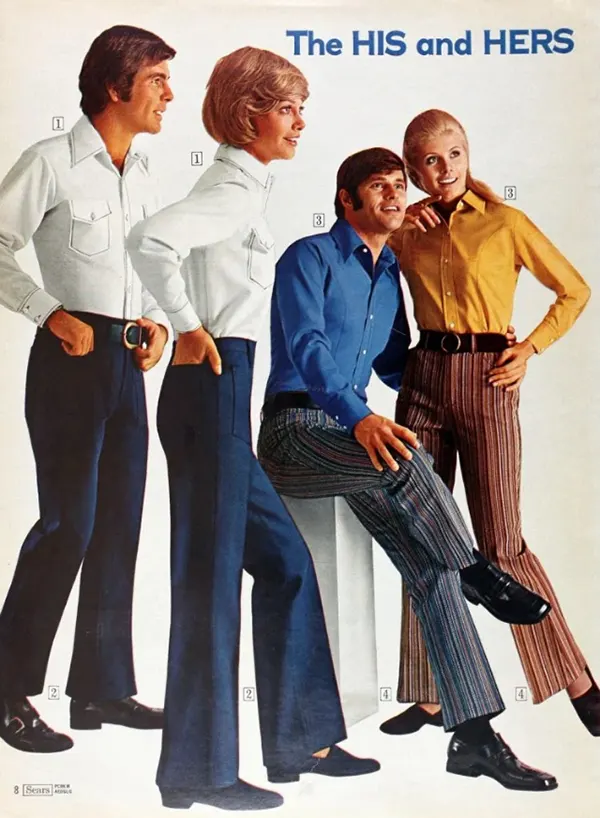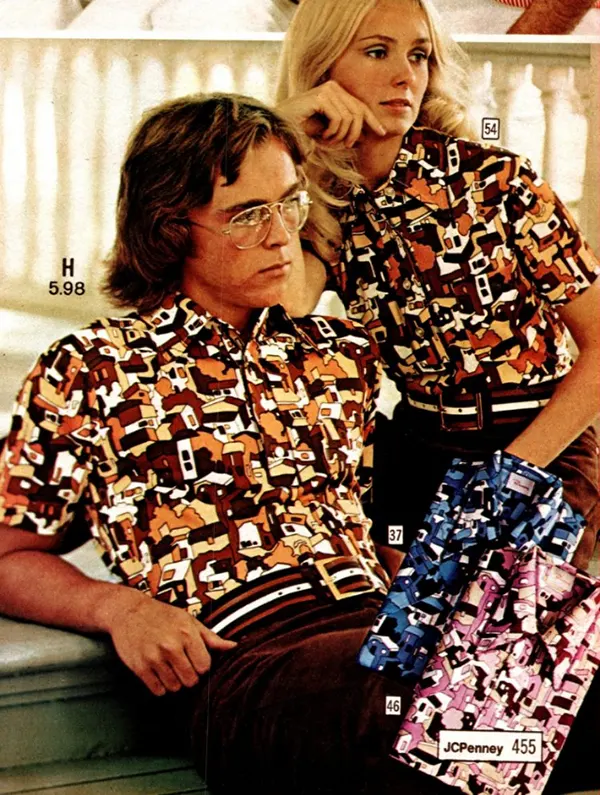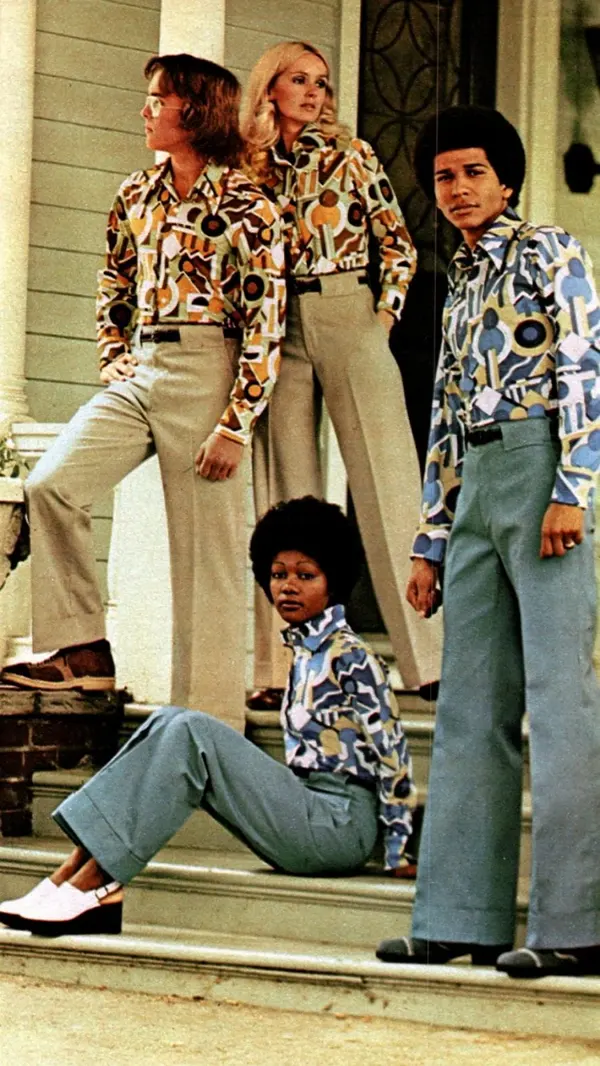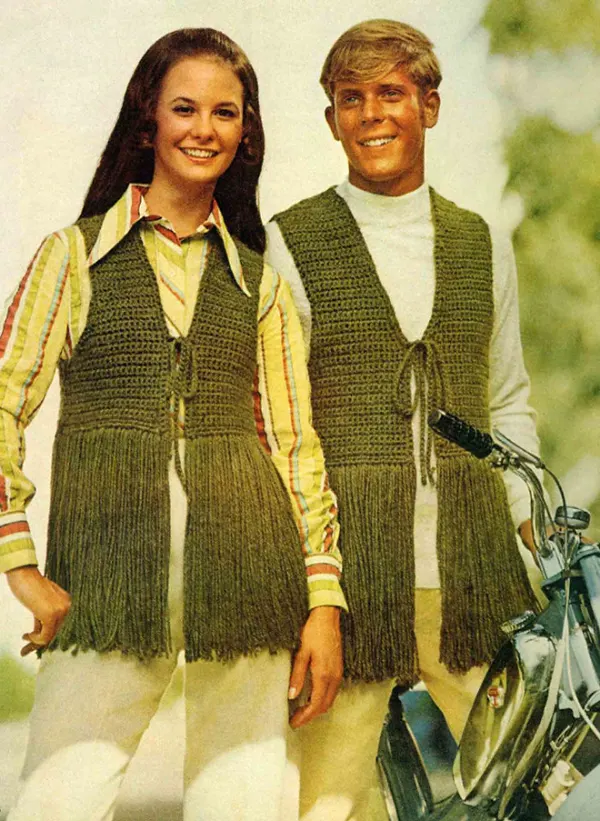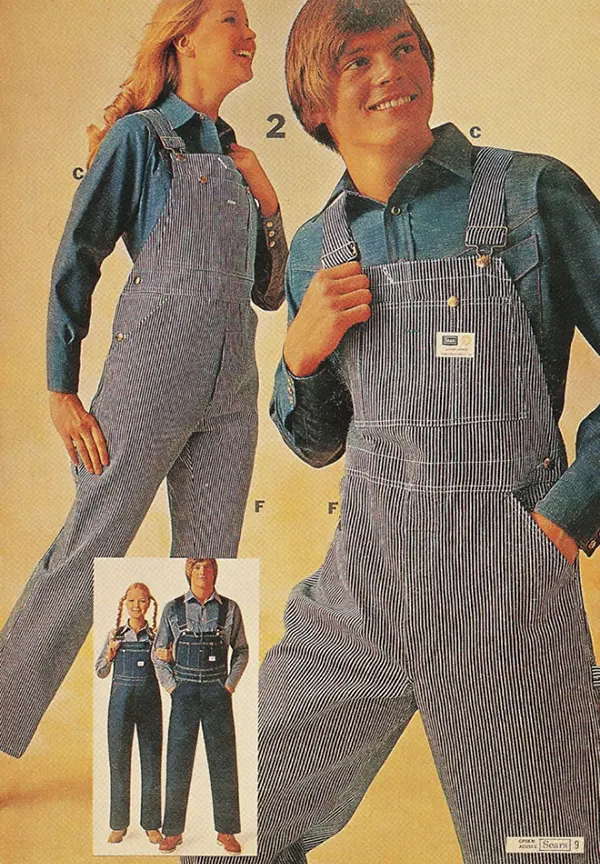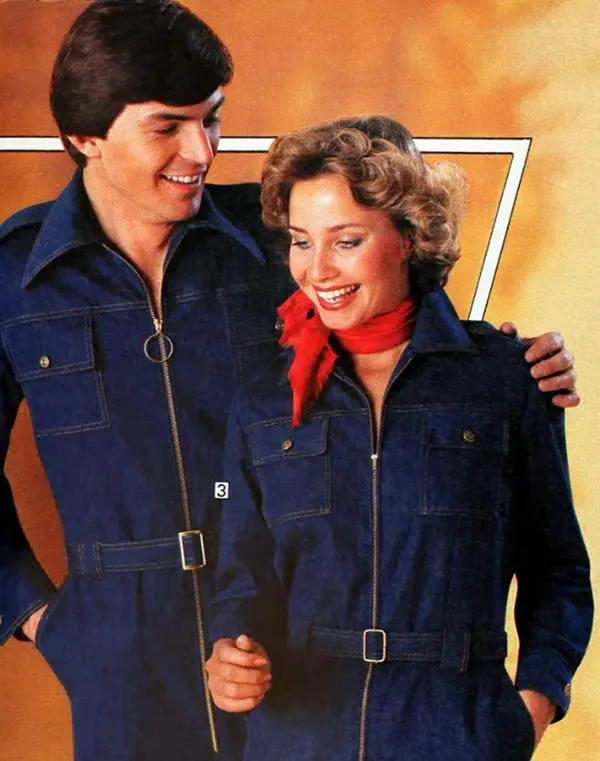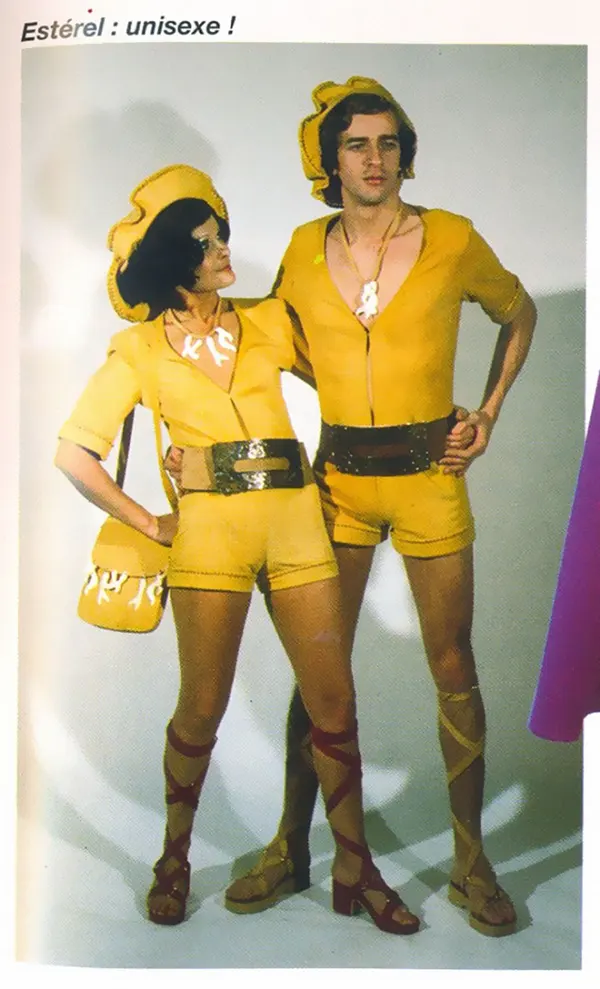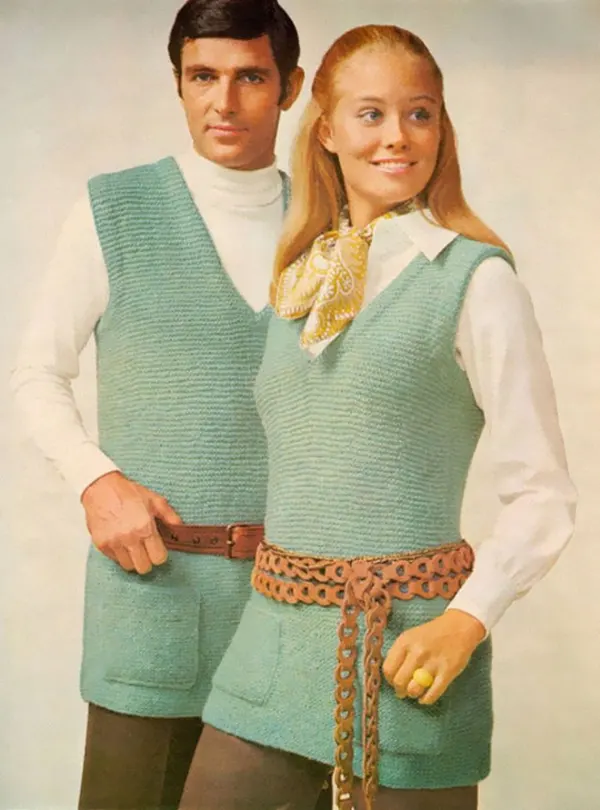It was the time of matching clothing frenzy, where the same outfits and separates were worn by both men and women (as couples). The notion of matching outfits for couples can be traced back to the early 20th century, but it wasn’t until the 1970s that it took on a whole new meaning. As society underwent a paradigm shift, challenging traditional gender roles and expectations, fashion followed suit. The unisex movement sought to blur the lines of gender-specific clothing, promoting a sense of equality and freedom of expression. The trend of matching outfits gained momentum as couples sought to visually express their connection and unity. It was a departure from the traditional “his and hers” mentality, where clothing choices were based on strict gender norms. Instead, couples embraced a shared (sometimes, cringeworthy) style that allowed them to break free from societal constraints and showcase their bond through fashion. The emergence of unisex matching outfits in the 1970s was influenced by several factors. The feminist movement, which gained significant traction during this period, challenged gender stereotypes and advocated for gender equality. This shift in societal attitudes encouraged individuals to reject traditional gender norms and embrace a more fluid approach to personal style. Another influential factor was the rise of the counterculture movement, with its emphasis on individualism and nonconformity. The concept of “matching” was reinterpreted in a rebellious manner, as couples aimed to make a bold fashion statement that went against the mainstream. It became a way to express their unique identity while challenging societal expectations. Designers played a crucial role in popularizing the trend of unisex matching outfits. They began creating collections that catered to both men and women, blurring the boundaries between masculine and feminine aesthetics. Fabrics, cuts, and colors were carefully chosen to ensure versatility and suitability for both genders. The aim was to create pieces that could be worn interchangeably, giving couples the freedom to mix and match according to their personal style. The use of bold and clashing colors was a hallmark of many of these outfits. Neon greens, fiery oranges, and vibrant purples were paired together in ways that defied conventional color schemes. These combinations, while intended to make a striking impact, often resulted in visually jarring ensembles that some would deem unattractive. Patterns also played a significant role in the “ugliness” of these outfits. Paisley, geometric shapes, and psychedelic prints were popular choices during the 1970s. When combined with mismatched colors, these patterns could create a visually overwhelming effect. What some saw as an audacious fashion statement, others perceived as a chaotic clash of visual elements. Moreover, the use of unconventional materials added to the perceived ugliness of these outfits. Polyester, a synthetic fabric that was prevalent during this era, had a distinctive sheen and texture. While it provided durability and affordability, it often lacked the natural elegance associated with more traditional fabrics, contributing to the overall “ugly” aesthetic. Over time, as fashion evolved and trends shifted, the prevalence of ugly matching outfits for couples waned. The 1980s brought a new wave of fashion aesthetics, characterized by power dressing and polished looks. Yet, the impact of these 1970s outfits remained significant, serving as a testament to a time of fearless experimentation and non-conformity in fashion.
The term “unisex” originated in the mid-1960s as a blend of “universal” and “sex,” representing the concept of gender-neutral clothing. It gained prominence during the 1970s when social movements challenged traditional gender roles. Designers like Mary Quant and Yves Saint Laurent embraced unisex fashion, blurring the lines between masculine and feminine aesthetics. Over time, the term “unisex” became widely recognized, promoting inclusivity and breaking down gender barriers in fashion. Today, unisex fashion continues to evolve, catering to diverse body types and celebrating individuality beyond traditional gender norms. (Photo credit: Pinterest / Flickr). Notify me of new posts by email.
Δ Subscribe

